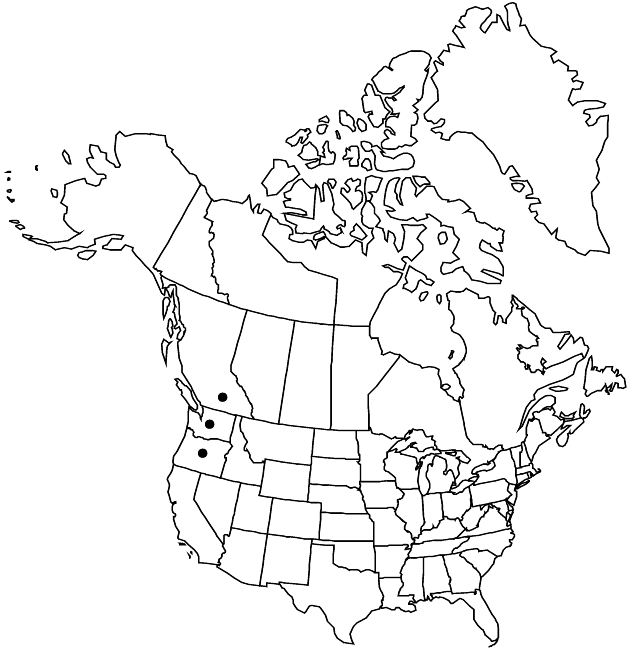Sericocarpus rigidus
in W. J. Hooker, Fl. Bor. Amer. 2: 14. 1834.
Plants 19–37 cm. Stems erect, puberulent. Leaves basal and proximalmost cauline withering by flowering; cauline sessile; blades obovate, 10–60 × 3–9 mm, margins entire, apices acute, distal acuminate, faces puberulent. Heads 2–3 per branch, in compact corymbiform arrays. Peduncle bracts ovate, puberulent. Involucres 6–9 mm. Phyllaries in 3–4 series, outer 3–5 mm, mid 5–7 mm, puberulent. Ray-florets 1–2; corolla-tubes 2–4 mm, laminae 2–3 mm. Disc-florets 9–17; corolla-tubes 4–6 mm, lobes 0.6–1 mm. Ovaries fusiform-obconic, 1–2 mm, strigose; pappi: inner series 6–7 mm.
Phenology: Flowering mid summer–early fall.
Habitat: Prairie habitats, dry pastures, dry grassy Garry oak forests with rocky outcrops
Elevation: 10–200 m
Distribution

B.C., Oreg., Wash.
Discussion
Of conservation concern.
Sericocarpus rigidus grows on the southern part of Vancouver Island, British Columbia, and in scattered locations to the south end of the Puget Sound area in Washington. It is rare throughout its range and is listed as threatened in Canada, as Species of Concern by the U. S. Fish and Wildlife Service, as Sensitive in Washington, and as Threatened in Oregon. It is in the Center for Plant Conservation’s National Collection of Endangered Plants.
Selected References
None.
Lower Taxa
"[" is not declared as a valid unit of measurement for this property."]" is not declared as a valid unit of measurement for this property.